Coagulation:- part 5 – INR (International Normalized Ratio), and PT
INR
What sample is needed for INR?
- This sample is just like for PTT or APTT.
- The blood sample is taken with an ESR (sodium citrate) solution.
- Mix blood 1.8 ml with ESR solution 0.2 ml.
What are the indications for INR?
- PT and PTT are advised to find the cause of unexplained bleeding or blood clot formation.
- INR is advised to monitor the blood-thinning drug’s medication, such as warfarin therapy.
- This is done for routine health screenings.
- To evaluate whether the medical condition is improving or worsening.
- To assess and measure the success or failure of a medication or treatment plan.
- This measures the extrinsic pathway.
What are the Precautions for INR and PT?
- A high-fat diet may decrease the PT.
- Alcohol use may increase the PT value.
- There are certain drugs that may increase the PT value:
- Barbiturates.
- Amonosalicylic acid.
- Allopurinol.
- Beta-lactam antibiotics.
- Chloramphenicol.
- Cephalothins.
- Cimetidine.
- Clofibrate.
- Alcohol.
- Neomycin.
- There are certain drugs that can decrease the PT value, which are as follows:
- Anabolic steroids.
- Digitalis.
- Benadryl (Diphenhydramine).
- Oral contraceptives.
- Vitamin K.
What is the blood coagulation process, and what are the facts?
- Prothrombin (Factor II) is produced in the liver and is Vit. K dependent.
- Vit. K deficiency leads to a decreased level of Prothrombin and gives rise to a bleeding tendency.
- PT is used to evaluate the extrinsic pathway and the common pathway.
The first reaction of the body to active bleeding is blood vessel constriction.
What is the first response to vascular injury?
- In small vessels, the constriction may be sufficient to stop bleeding, whereas in large blood vessels, the hemostatic mechanism is involved.
What is the primary phase (Hemostasis)?
- The primary phase of hemostasis is platelet aggregation and activation.
- The hemostatic system forms the clot, which plugs the vessel.
What is the secondary hemostasis?
- It will first activate the tissue factor and then the coagulation factors.
- The extrinsic pathway is activated by tissue factor and factor VII, which stimulates factor X and enters the common pathway.
- The intrinsic pathway occurs through XII, XI, IX, and VIII and enters the common pathway by activating factors X and Xa.
INR (International normalized ratio):
How will you define INR?
- This is the patient’s prothrombin time (PT) ratio and the normal mean PT time raised to the power of the international sensitivity index.
- ISI is the international sensitivity index, which is a correction factor assigned to the thromboplastin reagent.
- It reflects its sensitivity compared to an international reference standard.
- INR is a measure of the sensitivity of the specific tissue factor used in the test, as compared with a World Health Organization standard (normal British brain tissue factor).
- INR is a simple ratio. There is no unit of INR.
- This is calculated by dividing the patient’s PT by the mean of the normal range PT.
- The international sensitivity index (ISI) is 1.3 to 1.5.
How will you calculate the INR?
- You have noted the patient’s PT level, divided by the mean normal PT level.
- Then multiply by the ISI (1.3 to 1.5). Some authors take it as 1.
What are the uses of INR?
- The prophylaxis range of 2.0 to 3.0 is used to prevent:
- Embolism.
- Venous thrombosis.
- Pulmonary embolism.
- Myocardial infarction.
- In patients with anticoagulant therapy, the INR is maintained between 2 and 3.
- A range of 2.5 to 3.5 is used in patients with mechanical heart valves.
What is a Normal INR?
- The INR test result is given as a number.
- INR = 1 represents equal to normal clotting time.
- INR = 2 represents twice the normal clotting time.
- Normal range value =0.8 to 1.1
- INR is used in oral anticoagulants:
- For prophylaxis = 1.3
- All other indications except cardiac = 2.0 to 3.0.
- In cardiac diseases = the range is 2.5 to 3.5.
What is the required range of INR in various diseases?
| Disease | Required range of INR |
| Deep vein thrombosis (DVT) | 2.0 to 3.0 |
| DVT patient on warfarin treatment | 2.0 to 3.0 |
| DVT prophylaxis | 1.5 to 2.0 |
| Atrial fibrillation | 2.0 to 3.0 |
| Pulmonary embolism | 2.5 to 3.5 |
| Orthopedic surgery | 2.0 to 3.0 |
| Prosthetic valve prophylaxis | 3.0 to 4.0 |
| Prevention of embolus in a patient with atrial fibrillation | 2 to 3 |
What are the PT values in various diseases?
| Clinical condition | PT |
| Factor VIII deficiency | Normal |
| Factor XI deficiency | Normal |
| Factor XII deficiency | Normal |
| Factor II deficiency | Prolonged |
| Factor V deficiency | Prolonged |
| Factor VII deficiency | Prolonged |
| Factor X deficiency | Prolonged |
| Heparin therapy | Prolonged |
| Vit. K deficiency | Prolonged |
| Liver diseases | Prolonged |
| Coumarin therapy | Prolonged |
What are the indications for Warfarin therapy?
- Deep vein thrombosis
- Atrial fibrillation.
- Pulmonary embolism.
- Replacement of the artificial valves.
- Some cases of heart failure.
- What will you advise the patient about Warfarin therapy?
- Teach the patient to check the PT and INR values regularly.
- Teach the patient to evaluate the bleeding tendency, such as bruises, petechiae, and gum bleeding.
- The patient may have back pain.
- Blood will be positive in urine and stool.
- Teach the patient about the interaction of other medications, so they should take them with the permission of their physician.
What is the critical value of INR?
When INR = >5.5
- Please, for more information, see PT and PTT.
Questions and answers:
Question 1: What should be INR in deep vein thrombosis (DVT)?
Question 2: What is the effect of alcohol on INR?

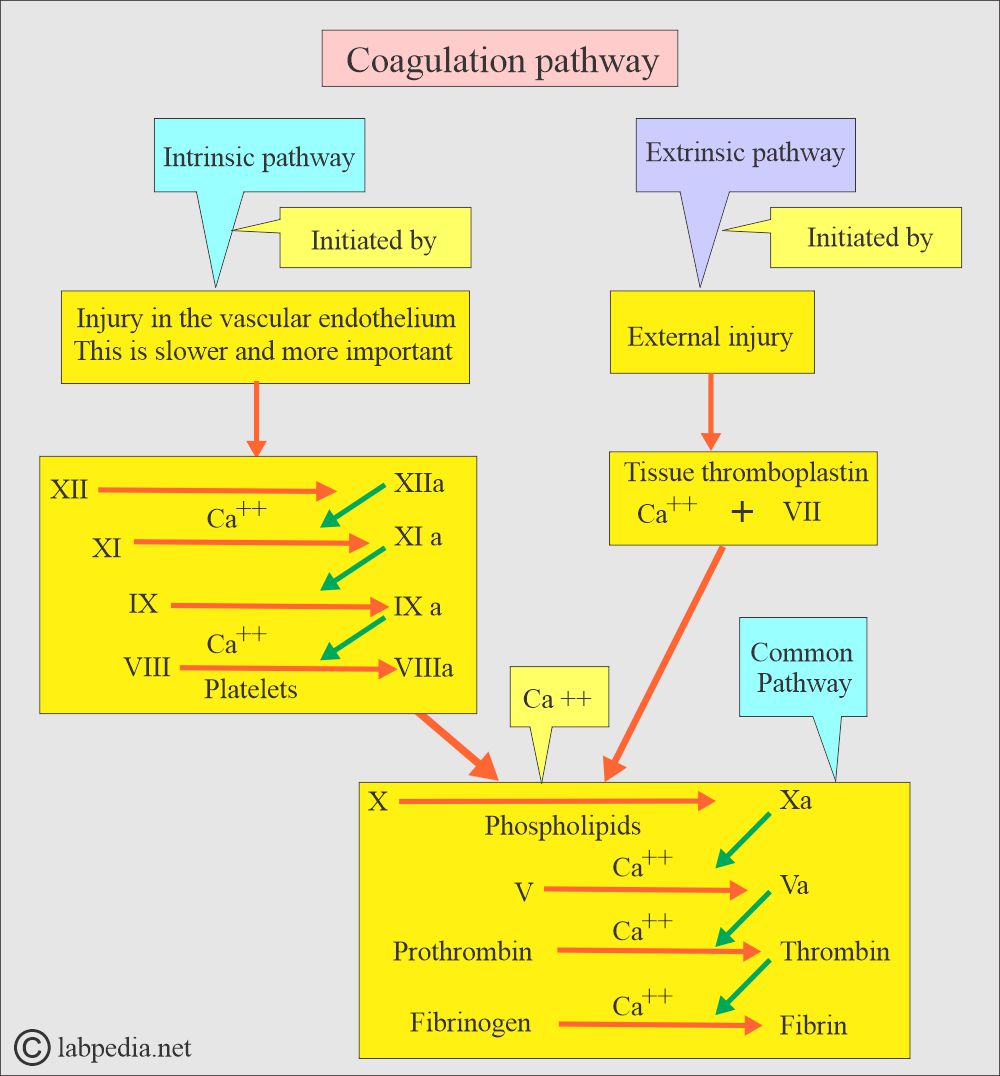
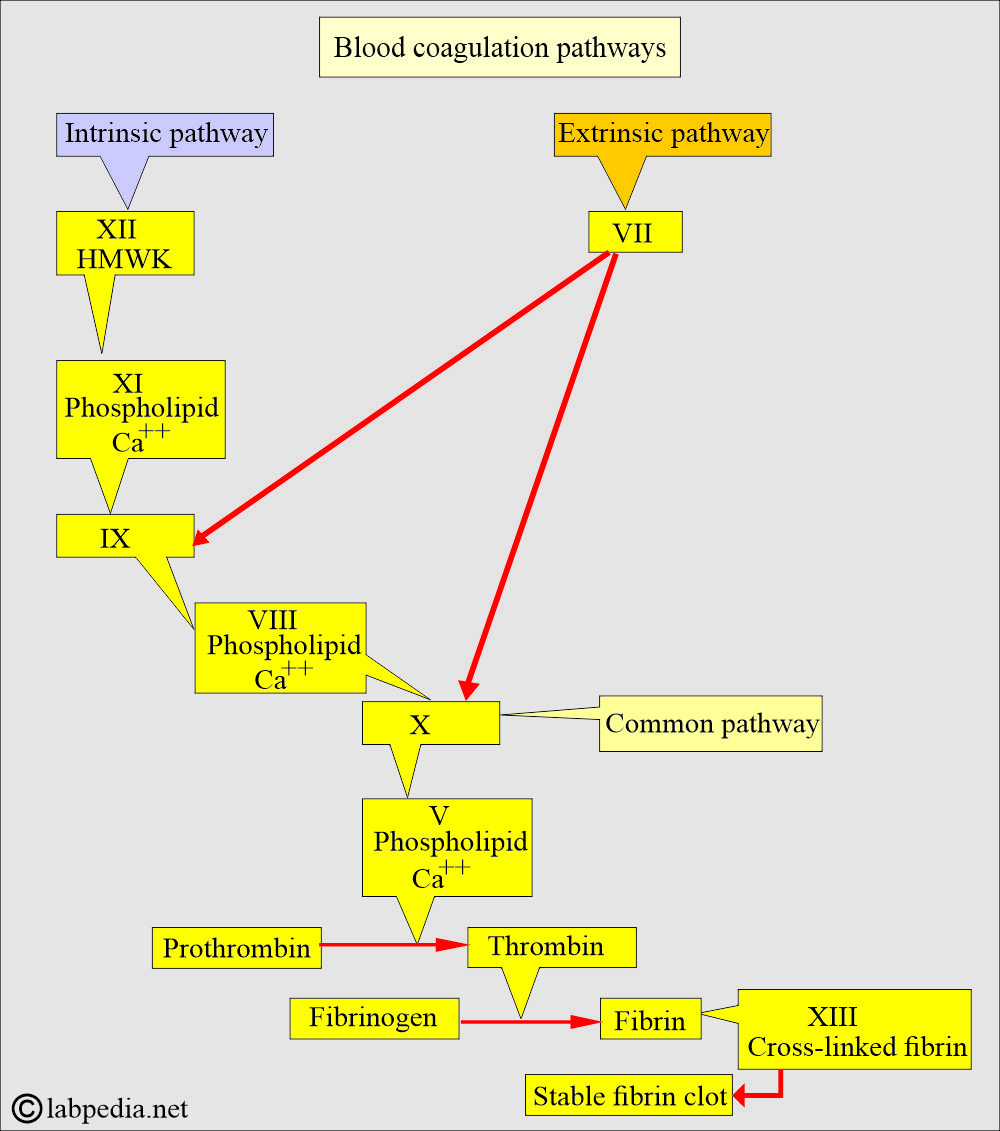

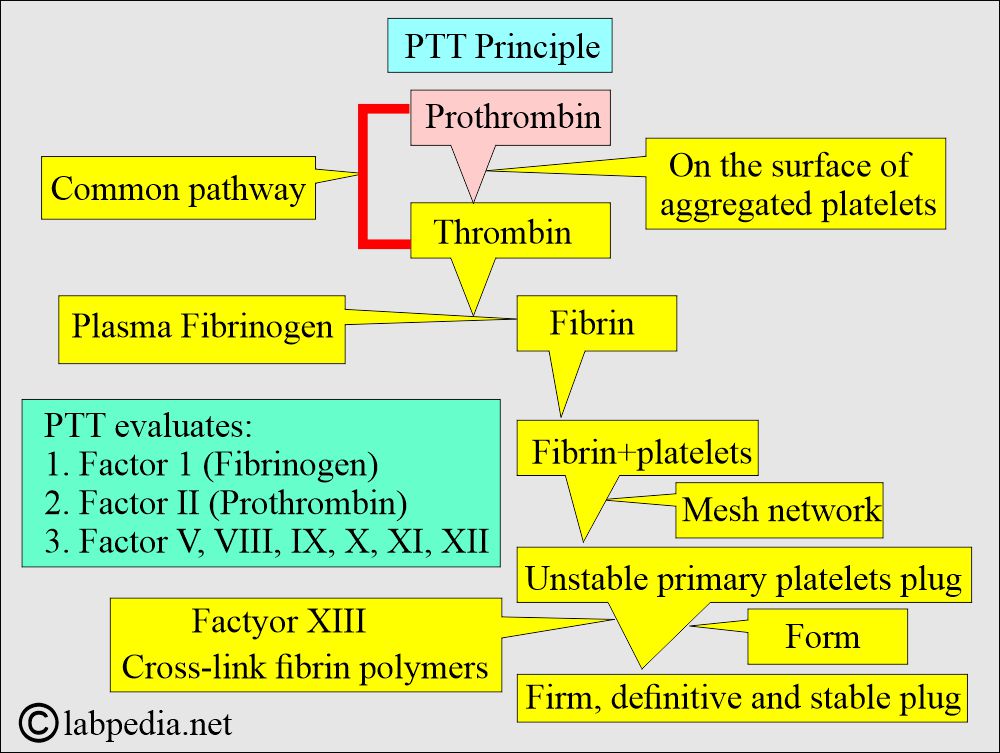

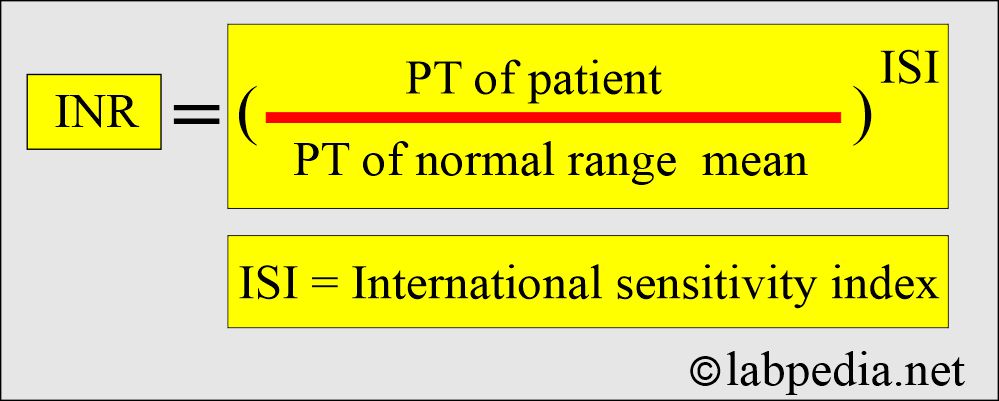
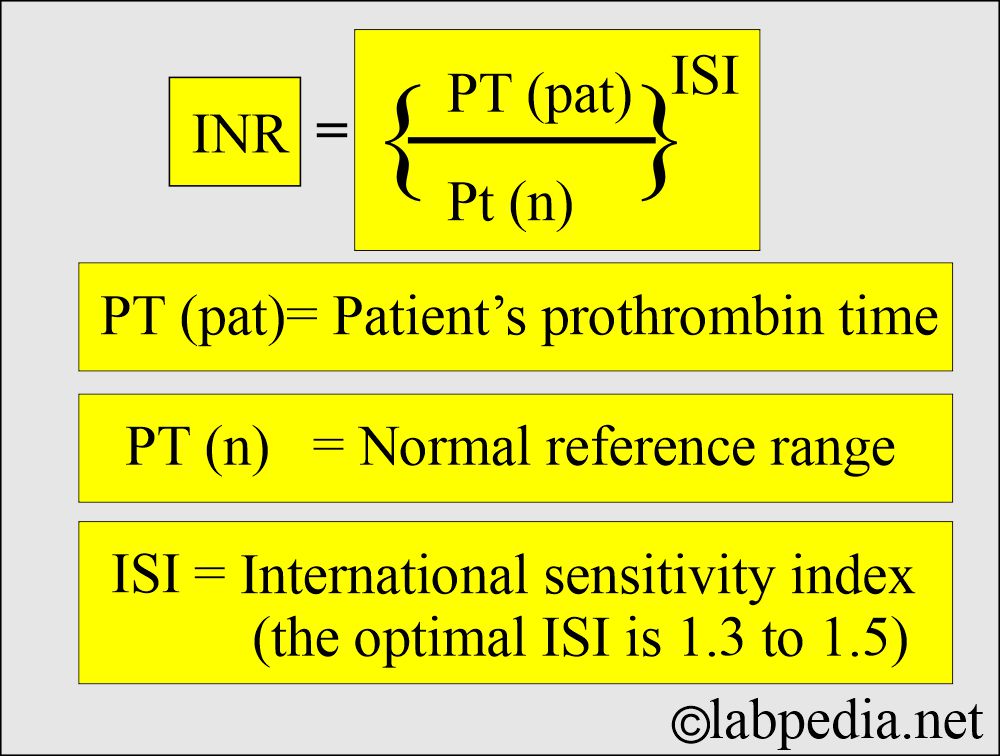
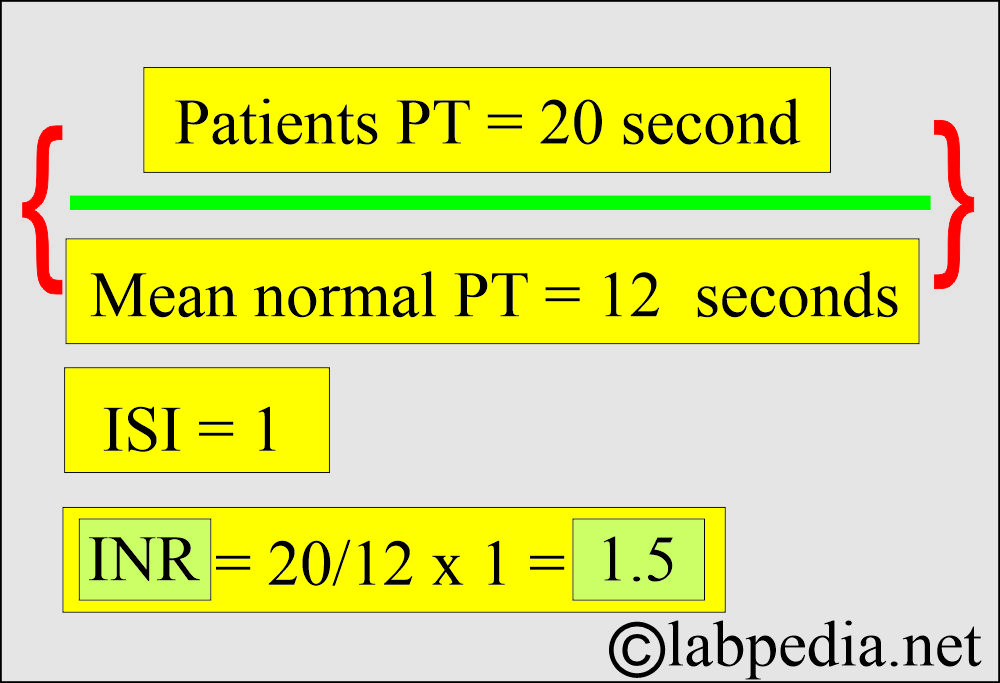
Thanks for the comprehensive explanation.